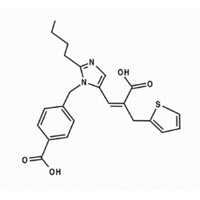The angiotensin receptor blocker, eprosartan, is associated with fewer adverse cardiovascular/cerebrovascular events, compared with the calcium antagonist, nitrendipine, in hypertensive patients with a recent history of stroke, Hans-Christian Diener, MD, said.
In the Morbidity and Mortality after Stroke (MOSES) trial, the agents were compared as secondary stroke prophylaxis in 1,405 hypertensive patients (mean age: 68 years) who had suffered a cerebral event in the preceding 24 months. Patients were randomized to eprosartan, 600 mg/d, or nitrendipine, 10 mg/d.
During the 2.5-year follow-up, achieved blood pressures were comparable between the two groups: mean blood pressure in patients randomized to eprosartan decreased from 150.7/84 mm Hg at baseline to 137.5/80.8 mm Hg at the final follow-up; mean blood pressure in patients assigned to nitrendipine declined from 152.0/87.2 mm Hg to 136.0/80.2 mm Hg.
The primary endpoint--the composite of total mortality and all cardiac and cerebrovascular events--was reached by 206 patients assigned to eprosartan and 255 assigned to nitrendipine, corresponding to a 21% reduction with eprosartan (p=0.014). This was the first clinical trial in secondary stroke prevention to compare two active treatments, noted Dr. Diener, chairman and professor of neurology, University of Essen, Germany.
COPYRIGHT 2005 Advanstar Communications, Inc.
COPYRIGHT 2005 Gale Group



